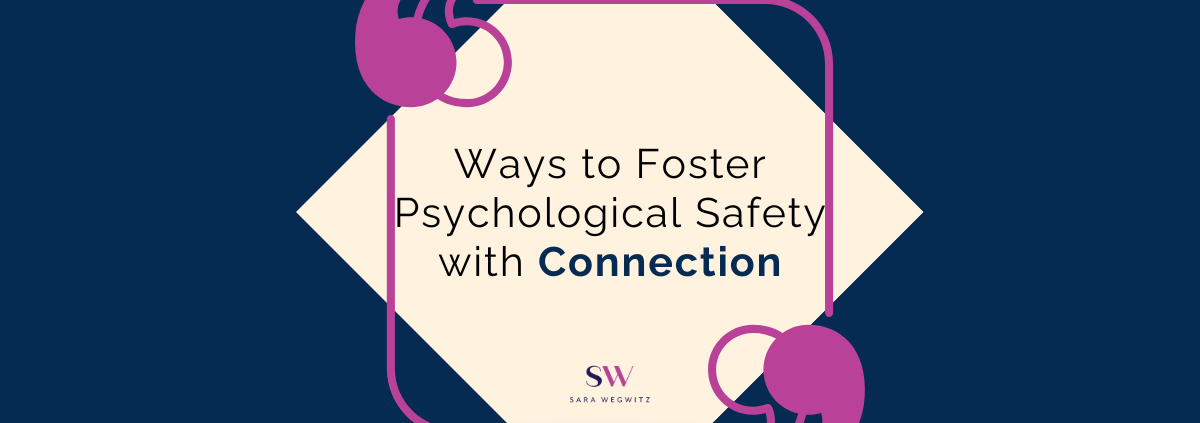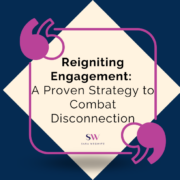Practical Ways to Foster Psychological Safety in the Workplace (and in life) part 1
 Dr. Amy Edmondson, the Harvard Business School professor, researcher, and author, coined the term psychological safety which can be defined as “a shared belief held by members of a team that others on the team will not embarrass, reject, or punish them for speaking up.” Google discovered with their Project Aristotle research that psychological safety is the key factor in determining the performance of any team.
Dr. Amy Edmondson, the Harvard Business School professor, researcher, and author, coined the term psychological safety which can be defined as “a shared belief held by members of a team that others on the team will not embarrass, reject, or punish them for speaking up.” Google discovered with their Project Aristotle research that psychological safety is the key factor in determining the performance of any team.
When psychological safety in the workplace is high it helps to foster trust, enable others to act, bolster engagement, and enhance resiliency of individuals and the organization. Each team member, regardless of rank or role within an organization, plays an integral part in the creation, maintenance, and sustainability of psychological safety.
How psychological safety works and shows up is unique to each organization. Many organizations know that they want more psychological safety in their workplace and yet have a disconnection on how they might go about creating and maintaining it. The following is part one of a four part series that will outline concrete and practical strategies that any team member can begin to implement that will help to build more psychological safety at work and in life.
CONNECTION
We as human beings are hardwired for connection. In fact, human well-being is not achieved alone: our psychological health is grounded in attachment to and acceptance by others. Human connections are especially critical for addressing the effects of stress, anxiety, burnout, and other forms of workplace distress.
When people feel connected and accepted by others several things can occur: self-confidence rises; levels of engagement increase; productivity improves; team members become more willing to “roll up their sleeves” and participate in problem solving and creative solution finding; and finally, team members have more courage to ask questions, speak up and learn from each other, and take risks. The list of benefits goes on. So how might we begin to foster connections at work? Here are a few strategies to help spark your own ideas:
Sincerely connect and get to know others personally. This might be done by taking time to chat at coffee breaks with others to explore what you might have in common; inviting a team member to a “no shop talk” lunch; or creating post work fun activities like a mini golf outing. One organization that I worked with started a “No cell phones allowed in the lunchroom” policy to build connection. This in turn yielded a positive effect with team members engaging more with one another at breaks which enhanced their level of trust and cohesion with one another.
Be liberal and genuine with your appreciation. Never underestimate the power of a simple and genuine in person “Thank you!” When offering a “thank you” be specific about what you are thanking the team member for. “I really appreciate your wordsmithing efforts to date on project X and recognize your quick catch on problem Y which helped us deliver even more value for our client.” You can also express your appreciation through putting a post-it note with appreciative words on a team member’s computer or offering a hand-written note or card. Another organization I worked with started 30-minute “Thursday afternoon Team Huddles” where the team would go around and share their wins of the week and do a brief yet fun team building activity to encourage connection with one another.
Show respect and positive reinforcement for participation. In most organizations, 80% of the conversations are dominated by only 20% of the participants. Psychological safety is not just about helping people feel safe but encouraging participation – all voices must be heard. Be sure to hold space in your meetings and interactions so that all members have an opportunity to participate. When an idea or input is offered be it in person, at a meeting, or even in an email be sure to thank the person for contributing their input, idea, or thoughts; especially participants who typically might not speak up. The more that someone feels seen and heard the more that they will be willing to speak up next time.
Every interaction offers an opportunity to build connection and trust. Maya Angelou suggested that we all ask four questions in every interaction we have with another person. These four questions are always silent. When we can answer yes to all four questions, especially with folks we interact with regularly, we feel seen, heard, and a connection. If any of those questions are answered with a “no” this is where we can feel that we want to hold back, pull back, self-censor, etc., which can lead to less trust and connection. The four questions are:
- Do you see me?
- Do you care that I am here?
- Am I enough for you? Or do you need me to be better in some way?
- Can I tell by the way you look at me that I matter or that I am special?
In our modern day world with all the distractions and where things move so quickly, we miss everyday opportunities to connect with those we live and work with. When it comes to building and fostering trust and connection, it never comes down to what you do with another or even how much time you spend with them. It always comes down to the quality of your presence. The next time you say hi and ask how someone is, meet them with your eyes and hold eye contact for one extra second. Be present in your interactions; a simple yet powerful strategy to foster connection.
In conclusion, fostering connection plays an integral role in the creating and maintaining of psychological safety with those we live and work with. I encourage you to be deliberate and intentional in strengthening your ability to connect with others. I’ll leave you with a couple of questions to ponder:
How do you consistently foster connections with those that you work with?
Moving forward, what new ways might you try that would foster more connection with those that you work with?
Stay tuned for part two of this four part series on practical ways to foster psychological safety next week.
If you are interested in learning more strategies and/or discovering training offerings related to team building, resiliency, and psychological safety in the workplace reach out today and book a getting started session with Sara!

